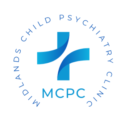- FAQs
FAQs

What is school refusal?
School refusal is a term used to describe a child's reluctance or refusal to attend school regularly or to stay in school for the full day. It is not simply a result of truancy or defiance but often stems from emotional distress.
What are common reasons for school refusal?
School refusal can be triggered by various factors, including anxiety (separation anxiety, social anxiety), depression, bullying, academic challenges, learning disabilities, or other emotional issues. Physical health issues can also contribute.
How can parents differentiate between school refusal and typical reluctance to go to school?
Persistent and excessive distress, physical symptoms (such as headaches or stomachaches), and a consistent pattern of avoidance that significantly impacts a child's ability to attend school are indicators of school refusal.
What signs should parents look for in a child experiencing school refusal?
Signs include frequent complaints of physical ailments, avoidance behaviors, excessive clinginess, emotional distress (tears, tantrums), changes in sleep or appetite, and a decline in academic performance.
How can parents approach a child who refuses to go to school?
Open communication is essential. Parents should express empathy, ask about concerns, and work collaboratively with the child, teachers, and school staff to understand and address the underlying issues.
What role can schools play in addressing school refusal?
Schools can collaborate with parents and mental health professionals to identify the reasons for refusal. Implementing a supportive and flexible plan, addressing any bullying or academic challenges, and providing counseling services are important.
Should parents force a child to go to school if they refuse?
It's generally not recommended to use force. Instead, a supportive approach involving communication, understanding, and addressing the root causes is more effective. Professional help may be needed.
When is it time to seek professional help for school refusal?
Professional help is warranted when school refusal persists, is causing significant distress, or is impacting the child's academic and social development. Mental health professionals can provide assessments and interventions.
Can school refusal be related to anxiety disorders or other mental health issues?
Yes, anxiety disorders, depression, and other mental health issues are common contributors to school refusal. Addressing the underlying mental health concerns is crucial for resolution.
Are there specific interventions for school refusal?
Interventions may include cognitive-behavioral therapy (CBT), exposure therapy for anxiety, family therapy, and school-based interventions. A multidisciplinary approach involving parents, school personnel, and mental health professionals is often effective.
Can school refusal affect a child's long-term educational and emotional well-being?
Yes, persistent school refusal can lead to academic challenges, social isolation, and long-term emotional difficulties. Early intervention and a comprehensive approach are essential for positive outcomes.
What resources are available for parents dealing with school refusal?
Resources include school counselors, mental health professionals, and educational materials on addressing school refusal. Parent support groups and workshops can provide guidance and strategies.
- School Refusal
Frequently Asked Questiones
It's crucial for parents and schools to address school refusal promptly and comprehensively. Understanding the underlying factors, providing emotional support, and collaborating with professionals can help children overcome the challenges associated with refusing to attend school.

What are the signs of depression in young people?
Signs of depression in young people may include persistent sadness, changes in sleep and appetite, loss of interest in activities, low energy, feelings of worthlessness, and thoughts of self-harm or suicide.
2. How does anxiety manifest in young people?
Anxiety in young people can manifest as excessive worry, restlessness, fatigue, difficulty concentrating, irritability, muscle tension, and sleep disturbances. Specific anxiety disorders may also have unique symptoms.
What are the common causes of depression and anxiety in young people?
Causes can be multifactorial, including genetic factors, family history, environmental stressors, trauma, hormonal changes, and neurotransmitter imbalances. Social factors such as academic pressure and peer relationships can also contribute.
Are depression and anxiety different in adolescents compared to adults?
While the core symptoms are similar, depression and anxiety in adolescents may be expressed through irritability and physical complaints more often than in adults. Additionally, challenges related to identity, school, and peer relationships are prominent in young people.
How can parents differentiate between typical teenage mood swings and signs of depression or anxiety?
Persistent and significant changes in mood, behaviour, or functioning may indicate depression or anxiety. If these changes interfere with daily life, relationships, or academic performance, seeking professional evaluation is important.
When is it time to seek professional help for depression or anxiety in young people?
If symptoms persist for more than two weeks, significantly impact daily functioning, or include thoughts of self-harm or suicide, immediate professional help is necessary. Early intervention is crucial for effective treatment.
What role do social media and cyberbullying play in depression and anxiety in young people?
Social media and cyberbullying can contribute to mental health issues by fostering comparison, bullying, and social pressures. Monitoring online activities and fostering open communication can help mitigate these challenges.
Can exercise and lifestyle changes help alleviate symptoms of depression and anxiety in young people?
Yes, regular exercise, a balanced diet, sufficient sleep, and stress management techniques can positively impact mental health. However, professional guidance and treatment are essential for severe cases.
What are evidence-based treatments for depression and anxiety in young people?
Evidence-based treatments include psychotherapy (cognitive-behavioural therapy, dialectical behaviour therapy), medication (for certain cases), and a combination. Early intervention and a supportive environment are crucial.
How can schools support students with depression and anxiety?
Schools can provide mental health education and counselling services and create a supportive environment. Collaboration between educators, parents, and mental health professionals is vital for comprehensive support.
Are there preventive measures for depression and anxiety in young people?
Promoting mental health awareness, fostering open communication, teaching stress management skills, and reducing stigma are important preventive measures. Early identification and intervention can also prevent worsening symptoms.
What resources are available for parents and young people dealing with depression and anxiety?
Resources include mental health hotlines, counselling services, support groups, and educational materials. Local mental health organizations and healthcare providers can provide guidance and referrals.
- Depression and Anxiety in Young People
Frequently Asked Questiones
Depression and Anxiety in Young People

Are girls less likely to have autism than boys?
Historically, autism has been more commonly diagnosed in boys. However, recent research suggests that autism may be underdiagnosed in girls due to differences in how autism presents in girls compared to boys
How does autism manifest differently in girls?
Girls with autism may exhibit social and communication challenges, but these may be less pronounced than in boys. Girls might also show more socially acceptable ways of coping with their difficulties, making their symptoms less obvious.
Are there specific signs of autism in girls?
Girls with autism may display similar signs to boys, such as social difficulties, repetitive behaviours, and intense interests. However, girls may be better at masking their challenges by imitating their peers, making it harder to identify their differences.
Why is autism in girls often diagnosed later than in boys?
Girls with autism may develop coping mechanisms to hide their difficulties, imitating neurotypical behaviours. This ability to camouflage can lead to delayed or missed diagnosis, often occurring later than in boys.
Do girls with autism have different interests than boys?
While girls and boys with autism may have intense interests, the specific topics or activities can vary widely. Girls might show interest in a broader range of issues that align with typical female interests, making their special interests less stereotypically associated with autism
How does social interaction differ in girls with autism?
Girls with autism may have a strong desire for social connection but struggle with social reciprocity and understanding subtle social cues. They might imitate their peers to fit in but find it challenging to form genuine and sustained social relationships
Are sensory sensitivities common in girls with autism?
Sensory sensitivities are common in both boys and girls with autism. Girls may, however, develop coping mechanisms to manage sensory challenges, making their sensitivities less obvious.
How can educators and parents support girls with autism?
Educators and parents can provide a supportive and inclusive environment, understanding and accommodating the unique needs of girls with autism. This may involve tailored educational plans, social skills training, and fostering an accepting community.
What resources are available for girls with autism and their families?
There are numerous resources, including advocacy organisations, support groups, and educational materials tailored to the unique needs of girls with autism. Consulting with healthcare professionals and specialists can also provide valuable guidance.
- Autism in Girls
Frequently Asked Questiones
Autism in Girls

Is ADHD less common in girls than in boys?
Historically, ADHD has been more frequently diagnosed in boys, but research suggests that ADHD is underdiagnosed in girls. Girls may display different symptoms, leading to the misconception that ADHD is less common in females.
How does ADHD manifest differently in girls?
Girls with ADHD may exhibit inattentiveness more than hyperactivity, leading to the "quiet" or "daydreamer" subtype. They might internalise their struggles, making their symptoms less noticeable compared to boys with ADHD.
What are the signs of ADHD in girls?
Common signs of ADHD in girls include difficulty with sustained attention, forgetfulness, organisation challenges, impulsivity, and hyperactivity (though it might be less pronounced than in boys).
Why is ADHD in girls often diagnosed later than in boys?
Girls with ADHD may develop coping mechanisms to mask their symptoms, such as hyperfocus or internalisation of struggles. This ability to compensate can lead to delayed or missed diagnoses, often occurring later than in boys.
Are academic challenges common in girls with ADHD?
Girls with ADHD may experience academic difficulties, including challenges with focus, completing assignments, and organisational skills. These struggles may not always be immediately apparent, as girls may work hard to compensate for their attention difficulties.
Do hormonal changes affect ADHD symptoms in girls?
Hormonal changes, particularly during puberty and the menstrual cycle, can impact ADHD symptoms in girls. Some girls may experience attention, mood, and energy fluctuations during different phases of their menstrual cycle.
How does ADHD affect social interactions in girls?
Girls with ADHD may struggle with social relationships due to difficulties in reading social cues, impulse control, and sustaining attention during conversations. These challenges can affect their ability to form and maintain friendships.
Are comorbid conditions common in girls with ADHD?
Girls with ADHD may have comorbid conditions such as anxiety, depression, or low self-esteem. Addressing these comorbidities is essential for a comprehensive approach to treatment.
How can educators and parents support girls with ADHD?
Providing structured environments, clear expectations, and targeted organisational strategies can support girls with ADHD. Educators and parents should also be aware of and address any emotional or social challenges that may arise.
What resources are available for girls with ADHD and their families?
There are various resources, including support groups, educational materials, and advocacy organisations focused on ADHD in girls. Seeking guidance from healthcare professionals, educators, and specialists is crucial for comprehensive support.
- ADHD in Girls
Frequently Asked Questiones
ADHD in Girls

